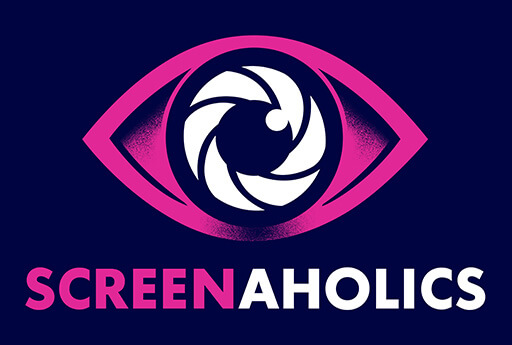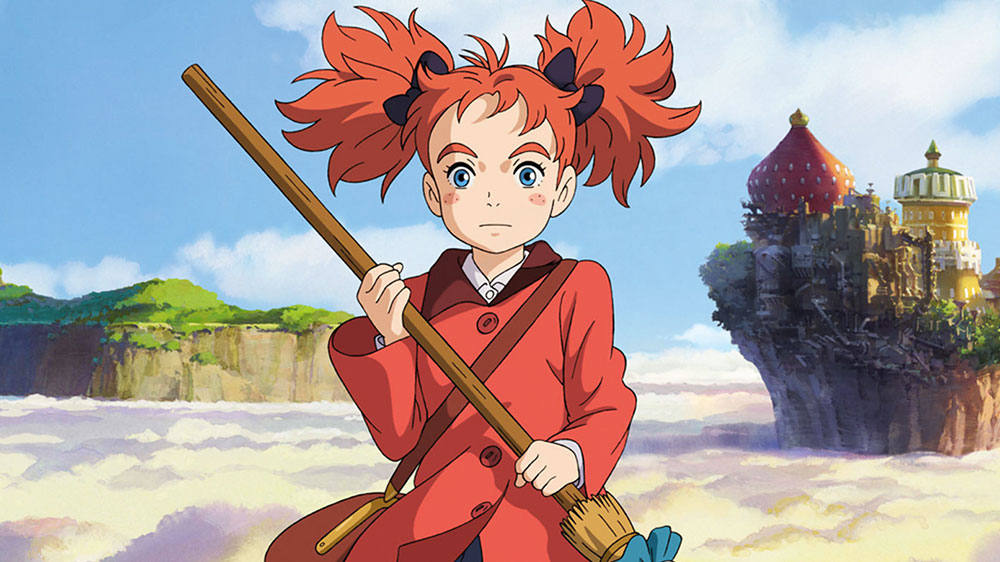Mary and the Witch’s Flower is an example of a movie that knows how to tell an entertaining story with the right infusion of creative elements. The fantasy film is animated in the beloved style of Studio Ghibli films such as Spirited Away (2001) and Howl’s Moving Castle (2004), despite not technically being a Ghibli film.
This spectacular debut is from Japan’s newfound animation company, Studio Ponoc, founded by Ghibli veterans Yoshiaki Nishimura (producer) and Hiromasa Yonebayashi (director). The film is based on Mary Stewart’s 1971 children’s book, The Little Broomstick, and encompasses the journey of a young red-haired girl, Mary (Ruby Barnhill), as she discovers the magical world of Endor College.
After moving to a quiet, rural town to live with her sweet-natured great-aunt Carol (Lynda Baron), Mary uncovers a battered broomstick and a mystical flower that sets a series of supernatural events in motion. Engulfed by a cloudy black hole and crash-landing in a foreign world, the wild-eyed child arrives at the gates of Endor College – a Hogwarts-meets-Wonderland-like magical establishment. After an unconventional encounter with the formidable Headmistress Mumblechook and ingenious Dr. Dee – voiced splendidly by Kate Winslet and Jim Broadbent – Mary learns that Endor is the most exceptionally exclusive college of magic that only the gifted and chosen have the privilege to attend, while those who enter the campus under false pretences are said to be transformed into something other than themselves.
In an attempt to save herself from permanent transformation, Mary unwittingly traps herself in what she perceives to be a harmless lie so she can safely find her way back home. But her encounter with the mysterious Madam Mumblechook and her peculiar obsession with the Witch’s Flower proves far more complicated, when a magical object falls into Mary’s hands and begins to unveil a secret from Endor College’s dark past.

Rich with emotion and complexity, the animation draws from Studio Ghibli’s artistic style, and showcases these traits through great use of human features and expressions. Mumblechook is designed as a large, almost reptilian-like figure, which is in direct contrast to Mary’s natural and simplistic child-like attributes. These visual dynamics are further enhanced by the infusion of soft and vibrant colours that help bring both the realistic and supernatural landscapes to life. Despite the strong contrast between Mary’s peaceful life in the country and her tumultuous experience in the world of magic, both settings work exceptionally well and help bring an authentic sense of realism to a traditionally animated film.
In addition to these elements, the narrative is packed with dynamic characters, universal themes and creative ideas that blend together in a fresh and captivating way. “Innocence has a catalytic effect on the absorption of magic” is one example of the use of thought-provoking dialogue that reveals deeper ideas surrounding the narrative’s moral conflicts. The idea of self-transformation – reflected through Mary’s desire to be something other than herself – as well as the foolish desire to change other people, despite the inability to control or harness certain “universal powers” are all recurring themes played out in a creative and effective way.
Not one element feels out of place, lacking or stuffed together for superficial purposes. The film isn’t unnecessarily convoluted with magical and philosophical ideas either. The story’s straightforward enough for you to follow, but sprinkled with just the right amount of creative and imaginative elements to give it a sense of originality and adequate structure. The 1-hour-and-40-minute time-span feels more than appropriate, given a large portion of its demographic is likely to be children, whereas a longer run-time would’ve inevitably impacted the tight story structure that builds on all the right aspects, including the initial setup, plot, and character development.
If this film is any indication of the kinds of projects percolating at Studio Ponoc, then the age of quality, traditionally animated filmmaking is still very much alive and well. Entertaining to both children, adults and everyone in between, Mary and the Witch’s Flower is an enchanting, philosophical and beautifully imaginative animated film.
Fun Fact:
Hiromasa Yonebayashi screened the film for his former colleagues at Studio Ghibli. Hayao Miyazaki gave Yonebayashi a congratulations but said he wouldn’t see the film. Toshio Suzuki and Isao Takahata both gave the movie praise and congratulated Yonebayashi on his work.




COMMENTS